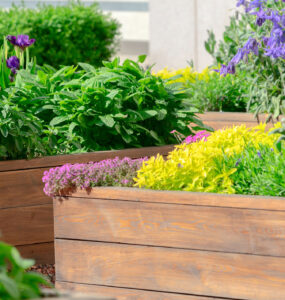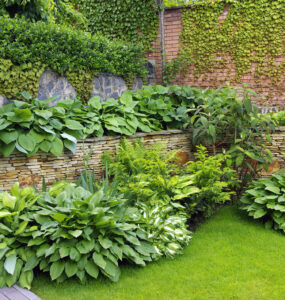
Building a Bee Hotel
by Rob Sproule
While we all love honeybees, this article isn’t about them. Honeybees get the media buzz, installing a hive in our backyard isn’t the only thing we can do to help our bees.
Alberta’s Wild Bees
How many species of native bees do you think live in Alberta? Amazingly, about 300 species call Alberta home, and honeybees, which are native to Europe, aren’t one of them.
Most of our bees, unlike honey and bumblebees, are solitary. We have leaf-cutting bees which slice circles out of leaves, sweat bees which are drawn to the salt on our brow, and mining bees which burrow into the ground like gophers.
Like bumblebees, solitary bees are passive and won’t sting unless their life is threatened. They lay their eggs in holes no wider than a centimetre in diameter. Finding these holes is the tricky part, with the bees looking to rotten logs, cracks in old buildings, or even hollowed out reeds and raspberry canes.
Making your Bee Hotel
“Hotel” is a bit misleading. You’re not making temporary accommodation for these bees, but a safe nest that they’ll return to for many years to lay their eggs. In doing so, you’ll also be increasing the yield of your fruit and veggies, and solitary bees are some of the best pollinators in the business.
This is a great activity for kids, both in terms of an engrossing craft and as a vehicle to opening a discussion about nature. The hotel itself is a collection of holes, each about 8-16cm deep and 3-8mm wide. Make them different! A range of sizes of holes will attract a diversity of bees.
Your bee hotel can be as simple or as complex as you want it to be. In its simplest form, you can drill holes in a large log or piece or firewood. Make sure any wood you use hasn’t been painted, stained, or chemically treated.
To get the kids involved, cut some bamboo stalks ahead into 6 inch lengths ahead of time with a fine toothed saw. Insert them into a paper milk container with the top cut off.
For more advanced craft, buy or make a wooden frame (some people make a bird house frame). Stuff it full of drilled wooden blocks and cut bamboo shafts in whatever configuration you like. If you want even more challenge, forget the frame and arrange the tubes in whatever configuration you like.
Things to Remember
Plan to place the hotel off the ground and facing east or southeast so it gets the morning sun and shelter from prevailing winds and rain. Don’t locate it next to doorways or along well-travelled paths where you and bees can disturb each other. Tuck them in a spot of the yard where you’ll visit but not where you live outdoors.
Put it in a spot where you’re not going to move it. Bees navigate by landmarks and moving their hotel can be very confusing for them.
If you use cardboard tubes for holes, make sure to replace them every spring. If you’re using wood materials, you’ll want to change them out when they fill up with bee leftovers.















